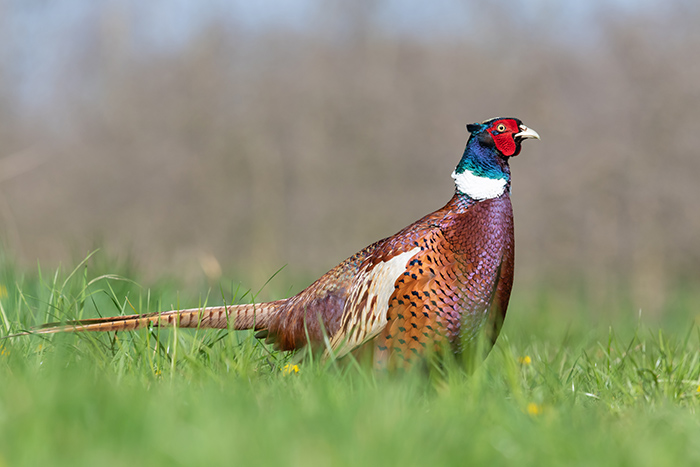Get Ready for Pheasant Season 2025

Analyze Past Data
First of all, I like to know a little about the pheasant population before going out. If numbers are strong, I can expect to see some good numbers on public or private land. If numbers are down, I might expect to see fewer pheasants, and I might not be disappointed if I’m headed home empty-handed.
One of the ways to get a good feel for the pheasant population is to review the data from the last few Iowa DNR Roadside Studies. Every year during the first part of August, the DNR travels gravel roads and reports on the population of pheasants they see. Sure, there is a lot of room for inaccuracies, due to nature, natural and man-made obstacles, and so much more. However, this is the best data we have, and it covers the whole state.
In 2022, the statewide average was approximately 19.6 birds per 30-mile route, slightly lower than 20.1 birds/mile in 2021. Iowa experienced a significant rebound in pheasant numbers in 2023, with the statewide average reaching nearly 23 birds per 30-mile route. This represented a 15% increase over 2022 and was the highest statewide count since 2015.
The August 2024 roadside survey showed a statewide pheasant population of 19 birds per 30-mile route, indicating a 14% decline from the 23 birds per route in 2023. This decline was largely expected due to ill-timed spring flooding, particularly across northwestern Iowa, which impacted nesting success and brood survival. Iowa had above normal rainfall during the nesting season. Despite the statewide decrease, some regions, like the Northwest, still showed higher densities compared to other areas, even with an 18% drop from their 2023 numbers. The East Central region even saw a 17% increase. However, the Southwest region experienced a significant decline of pheasant populations.
Even with the lower survey numbers, the DNR still predicted a good hunting season for 2024, and this was confirmed by the harvest survey, which showed over 460,000 roosters harvested, making it the second-highest harvest in nearly two decades (only surpassed by 2023). The weather, particularly during winter and the nesting season, remains a critical factor influencing annual pheasant population fluctuations in Iowa.
Scout
Now that we have an idea of the pheasant numbers, you should spend some time scouting. Chances are, you have some of your favorite spots that produce pheasants every year. There’s a good chance you’ll kick a rooster out of that area, too. However, some things can change that leave you scratching your head and wondering why you didn’t see any pheasants.
Take a quick look at the neighboring fields. This is particularly important in areas of Native Warm Season Grasses (NWSG) or Conservation Reserve Program (CRP) areas that have the NWSG planted on them. If a neighboring corn field or ag field borders the NWSG or CRP field, you have a good chance of seeing some birds. This is a good mix of food and habitat. However, if the field is rotated out of production, or if a building has popped up along the fence line, this may impact how many pheasants are on a particular piece.
Time of day is critical for observation, too. Pheasants are most active during the first few hours after sunrise and the last few hours before sunset. This is when they move from roosting cover to feeding areas and vice versa. Driving gravel roads slowly along potential habitat edges during these times, or walking quiet field perimeters, can reveal birds dusting, feeding, or crossing roads. You can wait at a field entrance and listen for any cackles of a flushing pheasant, too. The main point is to go to the area you’re going to hunt a few weeks before opening day.
While you’re scouting, it’s always nice to have a “back-up” plan for when things don’t go as planned on your preferred pieces. There might be too many hunters or seemingly too few birds on some reliable pieces. Before season, try a new piece of public land. Use the same steps for driving out and listening for pheasants in the morning. You might have a piece in mind, or you might need to use resources, like The Iowa Sportsman’s Atlas, for some ideas. Maps can help you get a feel for the surrounding area.
Don’t hesitate to talk to local farmers or landowners; they often have invaluable insights into pheasant movements and where birds have been seen and population numbers. Remember to always obtain permission before scouting and hunting on private land. Consistent scouting over several weeks will give you the best understanding of the pheasant population and patterns.
Analyze the landscape. Pheasants thrive in diverse landscapes, particularly those offering a mix of dense cover for roosting and escape, and open areas for feeding. Look for tall grass (like CRP and NWSG), dense brush, cattail sloughs, fence lines with heavy vegetation, and crop fields like corn or milo that offer both food and cover. Woodlots and tree rows bordering these areas can also hold birds, especially in colder weather.
Get Your Gear and Dog Ready
A little training refresh never hurts. Dust off those basic commands like “come,” “stay,” and “heel,” especially in new places with distractions. Practice retrieving and work on their quartering pattern – you want them covering ground efficiently, not just running wild. If they’re a bit sensitive to gunshots, work on that slowly and positively long before the season starts. A little effort now means a lot more fun when those roosters fly!
Give your gear a quick inspection, starting with your shotgun. If you haven’t already, give it a thorough cleaning after last season, checking everything moves smoothly, and maybe even patterning it with your preferred shells and chokes. Speaking of shells, make sure you’ve got plenty of your favorite pheasant loads ready to go.
Make Time to Go
Life is busy, and pheasant season comes and goes quickly. Make sure to dedicate a few mornings to pheasant hunting. Remember that in the hustle and bustle of work and daily life, prioritizing time for the hunt isn’t just about bagging birds; it’s about making memories and enjoying the life you have. While the satisfaction of working a field in the crisp morning air is undeniable, the true reward lies in the memories. So, before the season officially opens, take that crucial step of anticipating and preparing; this can ensure you make the most out of your time in the field. By setting aside the time now, you’re not just getting ready for a hunt; you’re actively choosing to invest in those invaluable outdoor adventures and the lasting memories that only chasing pheasants can provide. Make the time, because these moments are truly worth it.
By Shannon Rivers
September 2025
Here are some Tips for your Gun Dog before the Season Starts
Here is this month’s digital version of the Iowa Sportsman
Here is the Cattle/Dairy side of things


